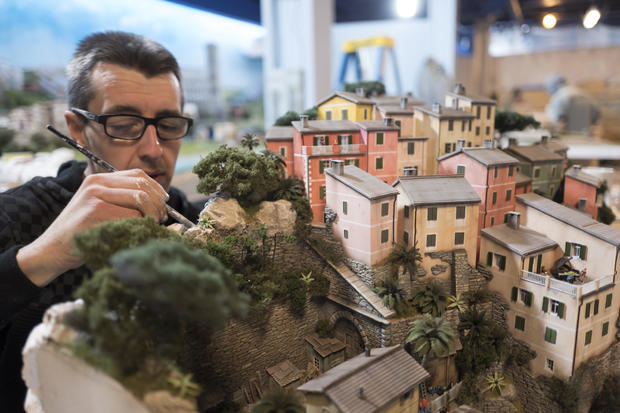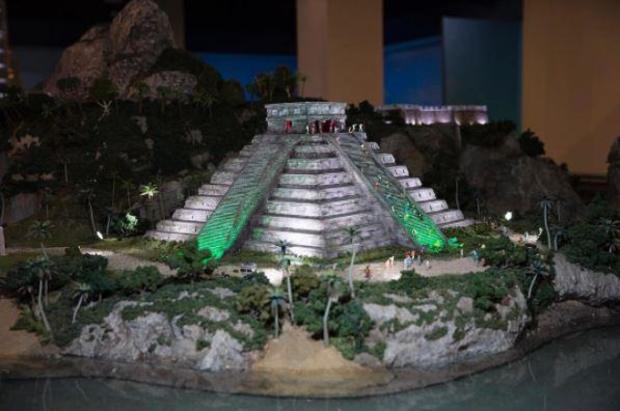Massive miniature world debuts in Times Square
A team of artists just made the whole wide world look a little smaller. Gulliver's Gate, an intricate display of tiny towns, opens Tuesday in one of the world's biggest cities.
The $40 million exhibit in New York City's Times Square features miniature versions of iconic landmarks across five continents and 50 nations.
Visitors to Gulliver's Gate may feel like Gulliver in the classic Jonathan Swift novel.
India's Taj Mahal, the Forbidden City of Beijing, London's Abbey Road, the Arc de Triomphe in Paris, and Jerusalem's Wailing Wall are thousands of miles apart and separated by oceans, but in Gulliver's Gate, all of them fit in a space the size of a football field, reports CBS News correspondent Vladimir Duthiers.
More than 100 designers, artisans and engineers from five continents came together to build this miniature world that features real running water in one area and a replica of the Panama Canal with a working lock to allow boats to pass through.
Chelsea Norwich and a team from Brooklyn spent more than a year designing and building mini-New York City.
"And then all of this is actually laser-cut plexi to look like wood, painted and detailed," Norwich explained.
They're using 3-D printing, laser-cutting and lots of handmade construction to tap into our imagination.
The miniature replica of the Big Apple features kids, a guy on a skateboard and a woman with an umbrella being blown away.
"I mean all these, like, little details that you wanna look into and try to see what's going on, because we're trying to build all of these scenes with the people interacting," Norwich said.
Heading south, a family-run team from Buenos Aires created Latin America, complete with the Panama Canal and Brazil's Christ the Redeemer. It was then shipped to New York in pieces and reassembled.
Matt Coté is the chief technology officer and the one responsible for making everything run on time.
"All of these models have been made by different people in different places with their own sort of esoteric infrastructure, electronically. But they've been made in such a way that we can take over," Coté explained.
Take over, so that in places like snowy Russia, the buses, trucks and cars can drive, stop, put on a turn signal and even make turns, seemingly on their own.
"There's a lot of stuff underneath that you're not seeing, including an induction wire that runs the entire route. And that supplies the power to the vehicles," Coté said.
A series of nearly microscopic infrared LEDs send out communication pulses to tiny receivers inside each vehicle.
"When they-- receive commands like 'speed up' and 'slow down' and 'turn your blinker on,' they know what to do," Coté said.
For people wanting to get in on the tiny town action, literally, there's a miniaturization machine equipped with 128 cameras that simultaneously snap your photo. Then a 3-D printer shrinks you down and creates a model citizen.
"There's something about miniatures that are just captivating," Coté said. "You know, you feel sort of King Kong like, in one sense. And on the other sense, you're captivated by what it must have taken to make that thing and we're hoping that'll happen here. People will say, 'how did they make that?'"
Like the real world, this one, too, is still growing. The two biggest projects for this year are: expanding Africa to include more than just Egypt, and finishing a fully functioning airport with planes that will actually take off and land.







